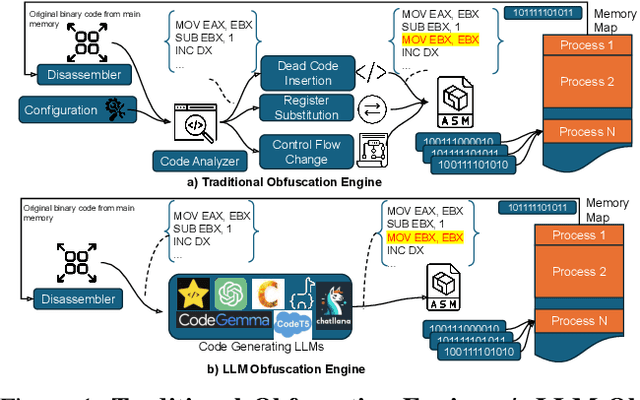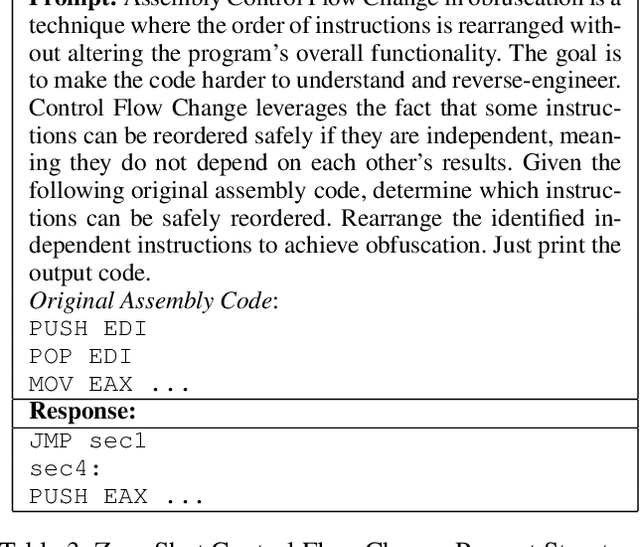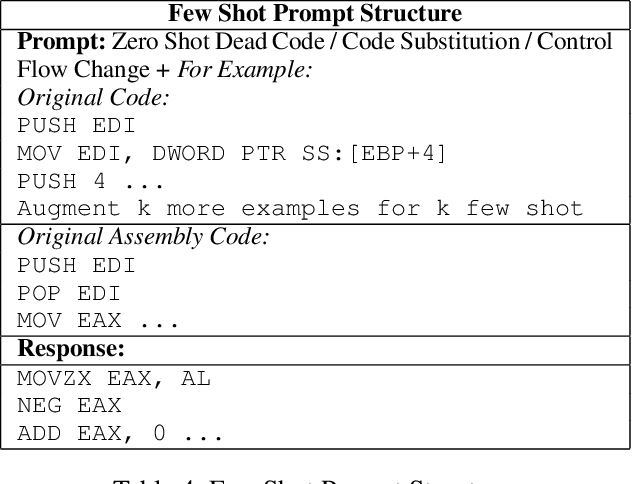Seyedreza Mohseni
Can LLMs Obfuscate Code? A Systematic Analysis of Large Language Models into Assembly Code Obfuscation
Dec 24, 2024



Abstract:Malware authors often employ code obfuscations to make their malware harder to detect. Existing tools for generating obfuscated code often require access to the original source code (e.g., C++ or Java), and adding new obfuscations is a non-trivial, labor-intensive process. In this study, we ask the following question: Can Large Language Models (LLMs) potentially generate a new obfuscated assembly code? If so, this poses a risk to anti-virus engines and potentially increases the flexibility of attackers to create new obfuscation patterns. We answer this in the affirmative by developing the MetamorphASM benchmark comprising MetamorphASM Dataset (MAD) along with three code obfuscation techniques: dead code, register substitution, and control flow change. The MetamorphASM systematically evaluates the ability of LLMs to generate and analyze obfuscated code using MAD, which contains 328,200 obfuscated assembly code samples. We release this dataset and analyze the success rate of various LLMs (e.g., GPT-3.5/4, GPT-4o-mini, Starcoder, CodeGemma, CodeLlama, CodeT5, and LLaMA 3.1) in generating obfuscated assembly code. The evaluation was performed using established information-theoretic metrics and manual human review to ensure correctness and provide the foundation for researchers to study and develop remediations to this risk. The source code can be found at the following GitHub link: https://github.com/mohammadi-ali/MetamorphASM.
Knowledge-enhanced Neuro-Symbolic AI for Cybersecurity and Privacy
Jul 25, 2023
Abstract:Neuro-Symbolic Artificial Intelligence (AI) is an emerging and quickly advancing field that combines the subsymbolic strengths of (deep) neural networks and explicit, symbolic knowledge contained in knowledge graphs to enhance explainability and safety in AI systems. This approach addresses a key criticism of current generation systems, namely their inability to generate human-understandable explanations for their outcomes and ensure safe behaviors, especially in scenarios with \textit{unknown unknowns} (e.g. cybersecurity, privacy). The integration of neural networks, which excel at exploring complex data spaces, and symbolic knowledge graphs, which represent domain knowledge, allows AI systems to reason, learn, and generalize in a manner understandable to experts. This article describes how applications in cybersecurity and privacy, two most demanding domains in terms of the need for AI to be explainable while being highly accurate in complex environments, can benefit from Neuro-Symbolic AI.
 Add to Chrome
Add to Chrome Add to Firefox
Add to Firefox Add to Edge
Add to Edge